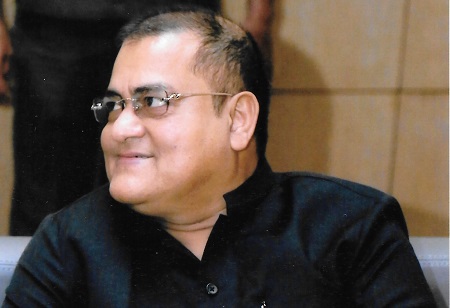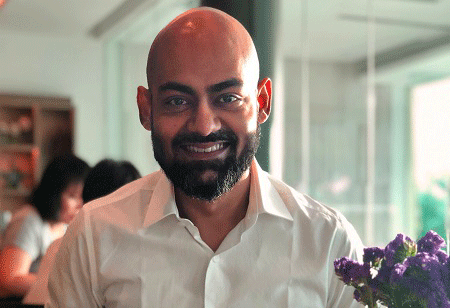
Mustak Hossain, Chairman & MD, Pataka Group
Indian silk has over the decades been home to Asia’s largest most modernized spun-silk and fiber business. A little-known fact is that while traditional silk is derived from the cocoon, the finest silk yarns suitable for luxury fashion wear and medical products is derived only from the discarded wastes of the traditional silk industry. Through years of collaborations, capabilities, and industry positions have been built placing Indian silk in high-end markets of Japan and Italy.
India has eyes set on a formidable roadmap for the global scenario, and it has been reflected in the ambitious policies we have taken to develop infrastructure and entrepreneurship. The number of start-ups that have emerged in technology, education, and services is by far the highest in the world. This brings new challenges to a nation facing dilemmas of Value vs Volume, Industrialisation vs Development, and Simplicity vs Complexity. It is time we took a new perspective on to issue that every business and industry must be mindful of, ESG. As the presiding G20 Nation, ESG is emphasized in every agenda and is an essential reality. Although ESG has been shaping innovations for a decade, but it has been viewed narrowly and India sets an example of how broad it should be.
Environment: The perspective of the environment began with climate and continues to dominate as climate change is posing a big challenge. The output of sericulture has experienced a drastic effect in production and placed a big obstruction in the competence Indian silks could have against international competition from China and Turkey. But broadening environmental objectives from only green technology, and organic products, we must understand that in a nation of 1.4 billion People are a critical part of the environment. Green initiatives of overhauling the use of dirty fuel and taking steps to give back to the environment (clean water and air) are basic and need to go beyond.

Sarif Hossain, Director, Pataka Group
For example, in 2018 we took it the unprecedented step of placing silk and partnering on a scientific expedition and Project Cocoon was initiated, and completed in 2020 just before the pandemic. The purpose was twofold, studying climate impacts in Antarctica and exploring a new frontier for silk fabrics in extreme climates, the first ever conducted by private companies. Changing the mindset of people makes this possible when we understand that farmers, workers, management, clients, and broader research community are all together in an Ecosystem. But little attention is being paid to people and resources are not being equitably deployed to develop people across regions.
Sustainability: “Make progressive disruptions” and “Progress through disruption”. Sustainability in the silk industry will have to come from a wider people-centric approach to policies. We are in a geopolitical conundrum and silk is an industry where international rivalry is at its highest. With resources under the pressure of climate change, policymakers must prevent the outflow of valuable resources from our nation. Indian silk industry has a long heritage and we dedicated ourselves to this cause by constantly pushing national production and placement of Indian silks competitively abroad. But regulatory bodies must also do their part also otherwise the glass ceiling will not be broken.
We are a diverse nation of dilemmas where there is a cycle of people being subject to regulations, regulators are essential to governments and governments are accountable to people. This cycle of a relationship is a strategic construct requiring the right balance of short-term goals and long-term ambitions. Frontiers must be pushed one milestone at a time and private industries are crucial clogs in that machinery. A sustainable industrial future requires an increase in high-quality silk products and prevents raw materials from being siphoned out of the nation.
Governance: The demand for growth is tremendous and in India, we still have not placed the right mechanism to ensure equitable distribution of technology, skills, and employment. Almost every economic initiative has allowed exponential urban industry growth, and rural India provides the market. This one-sided relationship cannot provide the sustainability we seek. In our entire operational history, we have never seen such high migration of skills away from agriculture-based industries. To make things worse we are nationally fragmented in industrial regions with the densely populated northern and eastern Indian regions increasingly falling behind. Governance needs to be fair and more importantly it needs to embrace the complexities of diversity, framing and enforcing rules equally across regions and people. In the haste of achieving growth big gaps are being created in industries engaged in manufacturing with high levels of hidden unemployment. Ease of business is necessary as there are many who want to invest in India in our drive to “Make in India”, but simplicity cannot be equated with oversight. The harsh reality is small and medium industries are struggling in India, while short-term value-boosting industries are bludgeoning to create an economic bubble.
Any industry requires discipline, leadership, and innovation. The textile industry too will need to be committed to building industries that place people first by empathizing with their needs for survival and growth. Strong perseverance is needed in the face of current and oncoming global economic complexities and if done so astutely we can bring Indian silk back to global prominence.
We use cookies to ensure you get the best experience on our website. Read more...